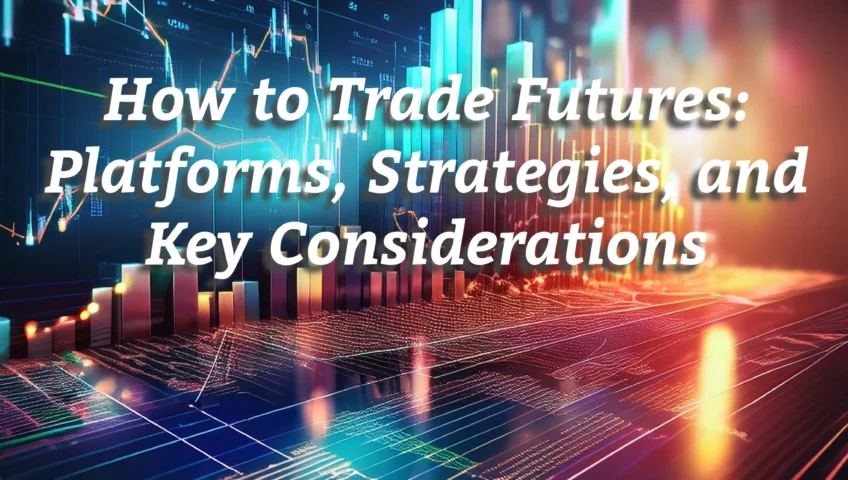The Power of IFOREXVIEW’s Exchange Liquidity Services

In the ever-changing landscape of financial markets, liquidity plays an essential role in determining the success of forex brokers and traders. IFOREXVIEW’s Exchange Liquidity Services offer unparalleled access to liquidity from the largest exchanges and industry leaders, ensuring smooth and cost-effective transactions. Moreover, liquidity services are crucial for traders and brokers alike. Here’s why liquidity services matter and how IFOREXVIEW is leading the way.
Why Is Liquidity Important in Forex Trading?
Liquidity refers to the ease with which an asset can be bought or sold without causing a significant price movement. In other words, in the forex market, liquidity determines how easily currency pairs can be traded. For instance, high liquidity ensures that trades can be executed quickly and with minimal slippage, a factor that is particularly important during times of market volatility.
Furthermore, liquidity is vital for traders who need to enter and exit positions swiftly, particularly during volatile market conditions. Consequently, for brokers, providing access to liquidity ensures they can meet client demands and offer competitive pricing. Thus, understanding liquidity’s impact on trading success is fundamental to both brokers and traders.
1. Access to Top-Tier Liquidity Providers
To begin with, one of the key advantages of IFOREXVIEW is its access to top-tier liquidity providers. By sourcing liquidity from the most reputable exchanges and liquidity providers, IFOREXVIEW ensures traders have access to deep liquidity pools. Therefore, traders using IFOREXVIEW’s platform can execute large trades smoothly without significantly disrupting the market.
Moreover, the ability to access liquidity from top providers translates into competitive pricing and narrow spreads. Consequently, this is crucial for traders looking to maximize profits while minimizing transaction costs. Not only does this benefit individual traders, but it also boosts broker-client relations by offering a better trading experience.
2. Seamless Execution
In addition, seamless execution is a significant benefit of IFOREXVIEW’s liquidity services. With the capability to process over 1 million transactions per second (TPS), IFOREXVIEW ensures that all orders are executed efficiently. Furthermore, this reduces the risk of slippage or delays, allowing traders to capitalize on real-time market movements.
Moreover, seamless execution guarantees that traders can react quickly to changes in market conditions. This is especially important, given the fast-paced nature of forex trading, where every second counts. As a result, IFOREXVIEW’s advanced infrastructure ensures that trades are executed in real-time, which is critical to maintaining a competitive edge in the market.
3. Multi-Asset Liquidity
In addition to forex, IFOREXVIEW’s liquidity services extend beyond just currency pairs. The platform offers multi-asset liquidity, providing access to a diverse range of financial instruments, including commodities, indices, and cryptocurrencies. As a result, traders have more opportunities to diversify their portfolios and manage risk effectively.
Furthermore, the ability to trade multiple asset classes under one platform allows traders to explore various markets while maintaining control over their risk exposure. Consequently, multi-asset liquidity is an important feature for both novice and seasoned traders looking to explore other financial markets beyond forex. This diversity makes IFOREXVIEW a one-stop solution for traders with various interests and strategies.
4. OTC Desk and Fiat On/Off Ramps
For clients looking to trade larger volumes or move between fiat and digital assets, IFOREXVIEW offers an OTC (Over-The-Counter) desk and fiat on/off ramps. Additionally, this feature allows traders to conduct large trades without significantly impacting market prices, ensuring discreet and efficient transactions.
Moreover, the fiat on/off ramp service enables users to seamlessly convert between fiat currencies and digital assets. In this way, it bridges the gap between traditional and digital financial markets. This makes it easier for traders to navigate both ecosystems without the challenges of liquidity mismatches or fluctuating prices.
As a result, traders looking to move between fiat and cryptocurrencies or those seeking larger trade volumes can benefit from IFOREXVIEW’s OTC desk, gaining an edge in their trading strategies.
5. Advanced Security Protocols
In addition, security is a top priority for any liquidity service provider. Therefore, IFOREXVIEW has implemented advanced security protocols to ensure the safety and integrity of all transactions. These include multi-factor authentication, cold storage solutions, and 24/7 DDoS protection.
As a result, traders can trust that their trades and transactions remain secure, even when executing large or sensitive transactions. Moreover, the incorporation of state-of-the-art security measures adds an additional layer of protection, reducing the risk of cyber threats or breaches.
Thus, by prioritizing security, IFOREXVIEW not only offers liquidity but also guarantees the peace of mind that comes with knowing your assets are protected.
6. Competitive Pricing and Low Latency
When it comes to liquidity services, pricing and latency are crucial factors for traders. Fortunately, IFOREXVIEW delivers on both fronts by providing competitive pricing and low-latency execution. This ensures that traders not only get the best possible spreads but also enjoy faster transaction times.
For example, in fast-moving markets, a delay of even a few seconds can lead to slippage, costing traders money. However, with IFOREXVIEW’s high-speed infrastructure, latency is minimized, ensuring that traders execute at their desired price points. Moreover, the platform’s competitive pricing helps traders save on transaction fees, which can add up significantly, especially for high-frequency traders.
Consequently, traders benefit from more efficient trading with better control over their costs, further enhancing their profitability.
7. Flexibility in Trade Sizes
In addition, IFOREXVIEW offers flexibility when it comes to trade sizes. For instance, whether traders are looking to make small, frequent trades or larger, more strategic positions, the platform accommodates both needs.
Moreover, the ability to execute various trade sizes provides flexibility for traders with different strategies. Thus, whether someone is trading on short-term price movements or making long-term investments, IFOREXVIEW’s liquidity services cater to their requirements.
In conclusion, flexibility in trade sizes, coupled with competitive pricing and low latency, ensures that traders can execute their strategies effectively on the IFOREXVIEW platform.
8. Integration with Trading Platforms
In addition, IFOREXVIEW’s liquidity services seamlessly integrate with major trading platforms such as MetaTrader 4 (MT4) and MetaTrader 5 (MT5). Therefore, traders who are accustomed to these platforms can continue using their preferred tools while benefiting from IFOREXVIEW’s deep liquidity.
Moreover, this integration allows for a smoother trading experience, as traders do not need to switch between different platforms or learn new interfaces. As a result, they can focus on their trading strategies without the added burden of navigating unfamiliar software.
This seamless integration ensures that traders can access top-tier liquidity without compromising on the tools they’re most comfortable using.
9. Real-Time Market Data
Furthermore, IFOREXVIEW provides traders with real-time market data, enabling them to make informed decisions based on the latest market conditions. Moreover, access to accurate and up-to-the-minute data is crucial for traders, especially in volatile markets.
For instance, real-time market data allows traders to spot trends, react quickly to market shifts, and adjust their strategies accordingly. In addition, this feature enhances the overall trading experience by providing transparency and control over trade decisions.
Consequently, traders can trust that they are operating with the most accurate and current data available.
10. Customized Liquidity Solutions
Finally, IFOREXVIEW understands that every trader’s needs are unique. Therefore, the platform offers customized liquidity solutions that cater to specific trading styles, asset classes, and volumes. For example, high-volume traders may require access to deeper liquidity pools, while others may benefit from lower spreads.
As a result, IFOREXVIEW works closely with traders to tailor liquidity solutions that fit their exact requirements. Moreover, this personalized approach ensures that traders can optimize their trading experience, regardless of their strategy or market focus.
In conclusion, by offering customized solutions, IFOREXVIEW reinforces its commitment to providing a versatile and trader-friendly platform.





